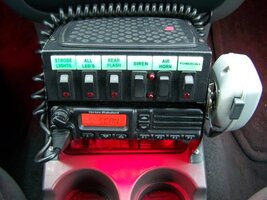Ok...I have a question for the wiring gurus on the board here. Let's say we have a vehicle with 9 individual LED light heads on a single "ON/OFF" switch...If I were to use an "ON/OFF/ON" switch would it be possible to activate only 5 heads in one "ON" direction and all 9 in the other "ON" direction.
Other questions would be; would any other items be needed (i.e. Diodes, etc)?
The reason I am asking is I would like to do this with my current lighting setup and have no room in my current switchbox to simply split the lights into two switches. Any help, feedback, suggestions would be welcome.
Thanks everyone!
Other questions would be; would any other items be needed (i.e. Diodes, etc)?
The reason I am asking is I would like to do this with my current lighting setup and have no room in my current switchbox to simply split the lights into two switches. Any help, feedback, suggestions would be welcome.
Thanks everyone!



